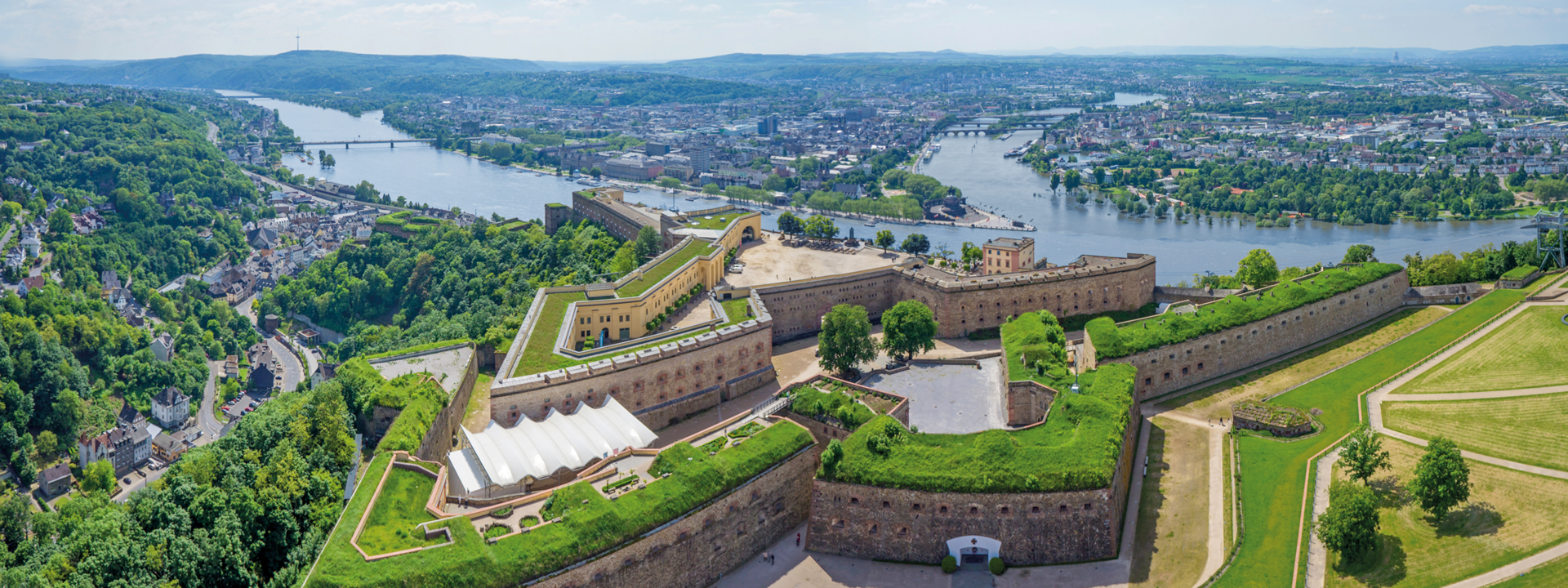
The Fortress City of Koblenz
A city that knows how to defend itself.
The Fortress System
The Large Fortress of Koblenz, officially "Fortress Koblenz and Ehrenbreitstein", is a system of Prussian fortifications built between 1815 and 1834 to secure the then strategically important confluence of the Rhine and Moselle rivers.
The fortress system consists of the city fortifications of Koblenz and Ehrenbreitstein as well as the fortifications in front of them in the form of forts, flèches and redoubts, some of which have been preserved or have almost completely disappeared over the course of time due to erosion and later demolition (e.g. Fort Kaiser Alexander). Lines of sight between the individual buildings, which were located on the ridges and in the lower-lying plains around the city, facilitated mutual protection.
The fortification system is part of the UNESCO World Heritage Upper Middle Rhine Valley and is included in the UNESCO programme of support for World Heritage Sites. It is also on the list of monuments of national importance.
The Franz, Asterstein and Konstantin fortifications are part of the "National Urban Development Projects 2015" funding measure between 2015 and 2019, which aims to enhance and redevelop historical fragments of the fortress.




